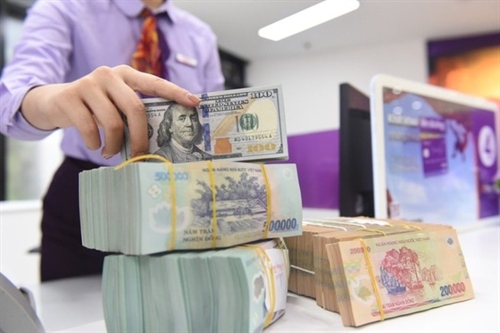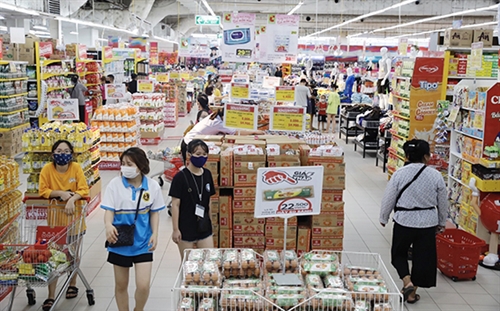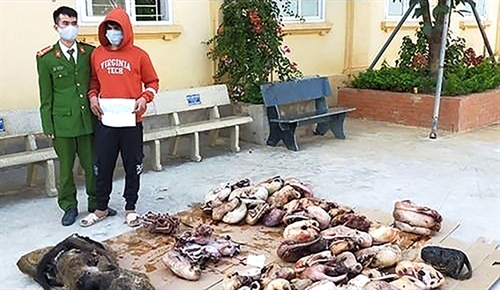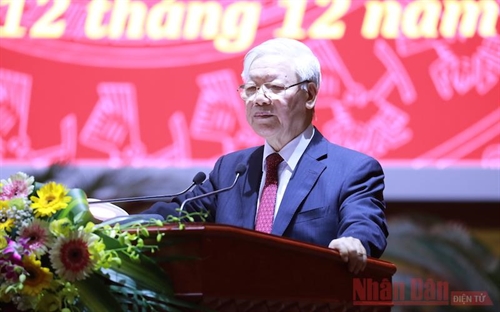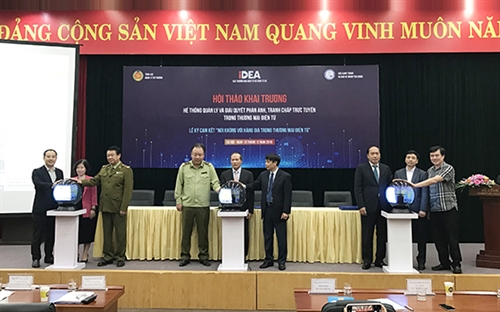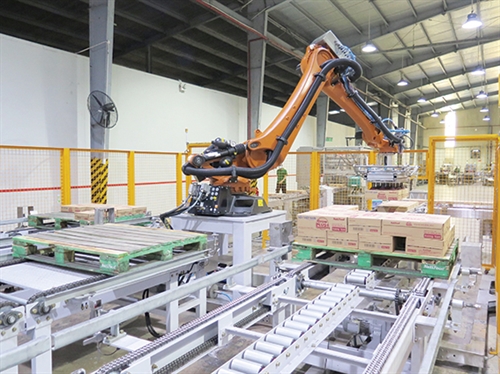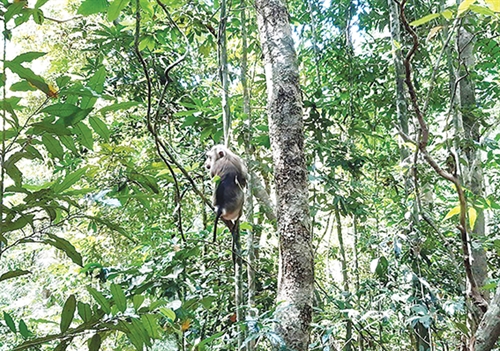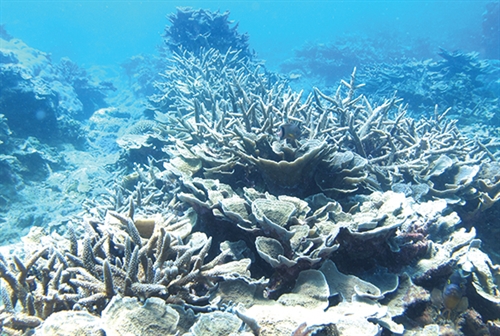EPR - Effective mechanism for environmental protection
Nguyen Thi
Ministry of Natural Resources and Environment
Producers’ and importers’ responsibility to recycle and treat their abandoned products and packages
The 2020 Law on Environmental Protection (Articles 54 and 55) and the draft decree detailing the Law (Chapter VII) both provide the producers’ and importers’ liability to recycle and treat their abandoned products and packages, aiming to apply the extended producer responsibility (EPR) mechanism in Vietnam. This mechanism has been widely and successfully applied in many countries since the 1990s, to recover abandoned products and packages for recycling and most efficient treatment, thus achieving the dual objectives of environmental protection and economic development. Thereby, EPR is a mechanism under which the producers’ responsibility[1] for their products is extended to the post-use stage, aiming to collect them at the final stage of their life cycle, which can be classified before treatment, mainly the recycling[2].
In Vietnam, EPR was initially touched upon in the Laws on Environmental Protection of 2005[3] and 2014[4]. Yet, their guiding documents only stopped short at identifying the abandoned products and packages to be gathered, recycled and treated as well as at establishing the producers’ liability to set up collection locations and the consumers’ responsibility. They failed to provide mandatory collection rates for recycling and recycling specifications, and also failed to set a mechanism to operate the system efficiently and smoothly.
The 2020 Law on Environmental Protection and its guiding decree have redressed the above-mentioned loopholes. Article 54 of the Law provides: “Organizations and individuals producing and/or importing products and packages with recycling value shall implement the recycling at the obligatory rates and according to prescribed specifications”. And Article 55 states: “Organizations and individuals producing and/or importing packages, containing toxic substances, which are hardly recyclable or impede the collection and treatment, shall pay financial contributions to support daily-life solid waste treatment activities.”
Accordingly, producers and importers of products and/or packages with recycling value have the responsibility to collect them for recycling after use at the obligatory recycling rates and according to the prescribed recycling specifications. For example, laptops are products of recycling value. As provided, they must be gathered for recycling at the recycling rate of 20 percent and according to specifications X. Producer A introduces 1,000,000 kg of laptops for sale on Vietnamese market in one year under brand A; hence, producer A must collect for treatment 200,000 kg of after-use (abandoned) laptops. This laptop volume must be recycled and treated according to specification X.
Producers and importers of products and packages, which are hardly recyclable, must make payments to the Vietnam Environmental Protection Fund to support residential solid waste treatment activities. For example, cigarette tubs are the remaining part of smoked cigarettes, which are hardly gathered and treated; according to regulations, the producers and importers shall pay a sum of VND 100 for every 20 cigarettes. If producer B introduces 20 million cigarettes under brand B for sale in Vietnam in one year, it must pay to the Vietnam Environmental Protection Fund a sum of VND 100 million.
 |
| Garbage is carried to Nam Binh Duong garbage treatment complex__Photo: Chi Tuong/VNA |
Identification of liable producers and importers
Ways to identify producers and importers in the draft Decree
The producers prescribed in the draft Decree are identified as:
- Organizations and individuals owning goods labels printed on the products, product labels and packages. For example: Company Coca Cola Vietnam for the products bearing Coca Cola or other labels it owns in Vietnam.
- Chains of supermarkets where packages are used to pack products sold in their supermarkets.
- E-commerce floors (with offices based in Vietnam) where business establishments use packages to pack products listed on the e-commerce floors for delivery to customers.
The importers defined in the draft Decree are those owning goods lots imported at the time of customs clearance for transport into Vietnam.
Producers and importers defined in the draft Decree
The draft Decree clearly defines the subjects liable to perform the extended responsibility. The producers and importers having to perform the recycling responsibility are organizations and individuals producing and/or importing products and/or packages prescribed in Appendix 52 to the draft Decree for sale on the Vietnamese market. The producers and importers liable to pay financial contributions into the Environmental Protection Fund to support waste treatment activities are those who turn out and/or import the products and/or packages defined in Appendix 58 to the draft Decree for sale on Vietnamese market.
Products defined in Appendix 52 comprise products of the following commodity lines: electrics and electronics; cell, accumulated battery; lubricants; inner tubes and tires; means of transport and construction machinery; and assorted packages.
Products defined in Appendix 52 comprise products of the following commodity lines: packages of pesticides, insecticides, sterilizing chemicals, assorted purging chemicals; swaddling clothes, nappies, menstruation napkins, wet napkins; chewing gums; cigarettes; and products and packages with plastics as a material component.
Subjects liable to pay financial contributions to the Vietnam Environmental Protection Fund to support waste treatment activities shall pay them at the levels set in the draft Decree and according to volumes of products sold on the market. This money will be used to support the following activities: collection, transportation and treatment of residential solid wastes from family households; research and development of solid waste treatment technologies, techniques and innovations; and collection, transportation and treatment of plant protection drug packages.
The EPR mechanism
General model and some particularities
To enforce the above-said extended responsibility of producers, the EPR operates under a general mechanism, with the Producer Responsibility Organization (PRO) acting as the center of the system. It represents the producers to organize the collection and recycling of abandoned products and packages of producers and importers and perform other duties related to the recycling responsibility such as registration of recycling and reporting on recycling results, communication to raise community awareness of garbage sorting at source, etc.
Depending on the practical situation of countries, PRO can be organized differently. In the Republic of Korea, they include the KPRC functioning to collect money from producers of bottled and packed commodities, and the KORA conducting professional and technical activities to organize the recycling such as selection of recyclers. So, the KPRC collects money from producers and pay to the KORA which I in charge of the organization of recycling according to regulations. Meanwhile, in Taiwan, the Recycling Fund set up by the government is the sole PRO for all commodity lines with products to be collected for recycling.
The EPR mechanism in Vietnam
In Vietnam, the recycling market remains underdeveloped with several characteristics.
Garbage sorting at source has not been done though it was already provided in the 1993 Law on Environmental Protection and experimented in a number of projects in different localities.
Discarded materials have been collected mainly by junk-dealers, who constitute a main garbage classification force in Vietnam. They buy discarded materials from households and individuals; pick up them on streets and at waste burial sites. Then, they sell the collected things to purchase units, where the products are further classified and sold to specific dealers, then recycling units.
Recycling units are largely located in craft villages, conducting the recycling on a small scale and with obsolete facilities, thus causing environmental pollution.
The EPR mechanism has not taken full shape, without professional PROs to accelerate this mechanism. However, in recent years, different forms of intermediaries have appeared in Vietnam, assisting the producers in organizing the recycling of abandoned products and packages, such as Vietnam Recycling (organizing the recycling of discarded HP, APPLE products). Moreover, some major producers have organized by themselves the collection and recycling of their own discarded products and packages, such as Unilever and TH.
Therefore, the EPR system in Vietnam is a mixed model with the combination of the Korean and Taiwanese models to suit the country’s characteristics. Under this mechanism, the producers may select recycling forms via PRO (as in the Republic of Korea) or through financial payments to the Vietnam Environmental Protection Fund (as in Taiwan).
Besides, the producers are also permitted to undertake the recycling by themselves, or by hired or authorized recycling organizations. If not, they may opt to pay financial contributions into the Vietnam Environmental Protection Fund, as provided in the draft Decree.
To manage and operate the EPR system, the National EPR Council would be set up under the draft Decree with members being managers, environment protectors and representatives of recycling-liable producers and importers. The Council would decide on the obligatory recycling rates and levels of recycling charges for each unit of discarded products, which serve as the basis for calculating financial contributions to the Vietnam Environmental Protection Fund. The Minister of Resources and Environment would promulgate the obligatory recycling rates and recycling charge levels at the request of the Council.
EPR targets and benefits
With the provisions that producers and importers are liable to collect and treat their abandoned products and packages, both must purchase them with their own funds for recycling and treatment. Hence, the producers and importers shall seek lawful ways to reduce such costs and the EPR objective is attained.
The EPR helps change the producers’ and importers’ practice in using raw materials and designing the products in order to gradually decrease and optimize the collection and recycling costs. They will turn out goods and use packages to reduce the generation of wastes, ensuring easy collection and treatment or substitute production materials so that their products are not subject to collection, recycling or treatment as provided at Articles 54 and 55 of the Law on Environmental Protection.
Besides, being a financial instrument to exert impacts on the production acts as mentioned above, the EPR helps generate an adequate and stable financial source for recycling abandoned products and packages in order to gradually raise the recycling rates to achieve the national recycling rates set the solid waste treatment strategies, planning and plans in Vietnam.
The EPR helps bring about benefits in environmental protection, economic development, settlement of social issues. This is the ultimate and most important goal of this mechanism.
The EPR’s benefits
For producers and importers, they can enjoy benefits related to their brands, production materials and efficiency upon implementation of the EPR.
The producers will heighten the images of their brands through demonstrating their responsibility towards the community and society. They will not only strictly observe Vietnam’s law but also implement goodwill international commitments to improve the environment as well as to heighten their social responsibility in the new-generation free trade agreements such as CPTPP and EVFTA. When their brands win the consumers’ trust, their benefit resulted in will be immeasurable.
They will create abundant material and raw-material markets, satisfying the production and recycling demands for raw materials and materials, but with prices much lower than the prices of protoplasm raw materials and materials and with equivalent quality, thus reducing their production costs.
They are compelled to change their designs, raw materials and technologies in order to turn out products and/or packages easy for collection and recycling, minimizing the collection and recycling expenses. Their products will be friendly to environment and satisfy the consumers’ tastes and trends, being more attractive and more competitive.
Environmentally, the EPR helps raise the recycling rates. Materials causing harms to the environment in the consumption process will be rotated in the production-consumption-collection-processing cycle or be converted into materials of other types with a longer life cycle, thus reducing their existence in the living environment as well as their negative impacts on the environment, plants, animals and ecological system.
Economically, the mechanism constitutes the primary important element in the circular economy, an economic model ensuring the sustainable development and optimizing the advantages as well as interaction between elements in the economy. Through the formation of a mechanism for enterprises to participate in the value chains of products and packages subject to collection and recycling, the interests of producers, importers and recyclers are optimized. They improve business and attract investment for further development of waste recycling and treatment, thus creating more jobs, reducing the reliance on imported raw materials, heightening the competitiveness of secondary materials and supporting tourism with a cleaner environment.
Socially, the EPR contributes to the provision of information on and the heightening of consumers’ awareness about waste sorting and treatment at home. It also helps raise the production and environmental protection capability of informal collectors (junk dealers) and recyclers (in craft villages); helps increase the interaction between raw materials suppliers and package designers as well as producers, consumer goods dealers and waste processors; and helps create new jobs.
What the producers and importers are expected to do?
As mentioned above, the EPR constitutes a multi-effect tool, changing the practices of product and package production to reduce the collection, recycling and treatment costs, on the one hand, and serving as an effective financial tool to promote the collection and recycling and minimize the discharge of products and commodity into the environment, thus greatly contributing to environmental protection, on the other hand.
Therefore, the producers and importers should grasp the EPR policy in order to adjust their production process by re-designing products, changing production raw materials toward environment friendliness, and reducing the use of packages.
The draft Decree sets a roadmap for producers and importers to perform their recycling and treatment responsibility with incrementally increased recycling rates. They also have to provide information on the quantity, volume of assorted products or packages turned out or imported for use as the basis for the implementation of their responsibility. After their EPR implementation, enterprises will report on their audited practical data to prove the accomplishment of their obligations.
The most important duty of producers and importers is to achieve the obligatory recycling rate and the prescribed recycling specifications. So, they should seek solutions to meeting such requirements. As mentioned above, they may themselves organize the recycling, hire qualified and capable recyclers or authorize a third party to undertake the recycling. However, the authorized recycling by a third party has proved to be most effective.
They should actively participate in the process of determining the compulsory recycling rates as well as recycling charge levels by appointing their representative to the National EPR Council. The obligatory recycling rates and the recycling charge levels will be updated once every three years. With the EPR provisions drafted by the Legal Affairs Department of the Ministry of Natural Resources and Environment with the active participation of producers, importers and recyclers as well as domestic and international specialists, the draft Decree has gained high consensus from producers and importers. Yet, to materialize such provisions, a lot of things need to be done, including the establishment of an EPR operation system; the application of information technology to registration and system management; the effective implementation of the policy on collection of residential solid waste treatment charges; the formation of a modern and professional recycling industry. All these require the strict implementation by enterprises, the determination of administrations at different levels to apply synchronous sorting, collection, recycling and treatment measures, and especially the people’s support in sorting garbage at source, and a higher awareness of the community about the ERP.-
